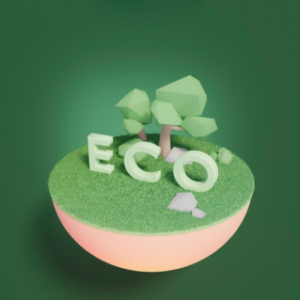The circular economy concept is being investigated as a means of driving sustainability and creating new economic opportunities. The circular economy is an economic model that emphasizes the continual use of resources rather than the typical take-make-waste approach. The circular economy keeps resources in use for as long as possible while minimizing waste through the use of closed-loop systems. This has the potential to help create new jobs and strengthen the economy.
The use of recycled materials is another method that the circular economy can generate new jobs. Businesses can lessen their dependency on pricey virgin resources by adopting recycled materials. Furthermore, the use of recycled materials might open up new economic prospects for organizations that specialize in the collecting, sorting, and processing of recycled materials.
The creation of new technology and ideas is one way that the circular economy can create new jobs. Smart packaging technology and digital platforms, for example, can open up new business prospects and spur innovation in a variety of industries. Furthermore, because the circular economy supports resource reuse rather than product disposal, it can create jobs in the repair, refurbishing, and reuse of products.
The circular economy, in addition to producing new jobs, has the potential to strengthen the economy through cost savings and increased efficiency. Businesses can possibly save money and boost efficiency by reducing waste and resource consumption, resulting in increased competitiveness and profitability. Furthermore, the circular economy has the potential to generate new business possibilities and drive innovation, resulting in economic growth and development.
Overall, the circular economy has the ability to strengthen the economy and create new jobs. Its emphasis on resource reuse and closed-loop systems has the potential to provide new business opportunities, promote innovation, and boost efficiency, resulting in economic growth and development. As more firms and governments see the benefits of the circular economy, we may anticipate more adoption of this economic model, which can help to create new jobs and promote economic growth.
It is vital to emphasize that the shift to a circular economy will take time and will necessitate the participation of enterprises, governments, and consumers. Governments may help the transition to the circular economy by enacting legislation and providing incentives such as grants, loans, and tax breaks. Furthermore, by adopting circular business models and investing in innovative technologies and processes, firms may take the lead in driving the transition to the circular economy. Consumers may help the transition to a circular economy by making more sustainable purchase decisions and supporting firms that are dedicated to sustainability.
The circular economy has the potential to generate new job opportunities, increase the economy, and promote sustainability. Its emphasis on resource reuse and closed-loop systems has the potential to provide new business opportunities, promote innovation, and boost efficiency, resulting in economic growth and development. Businesses, governments, and consumers can all work together to accelerate the transition to a circular economy and create a more sustainable and prosperous future.










